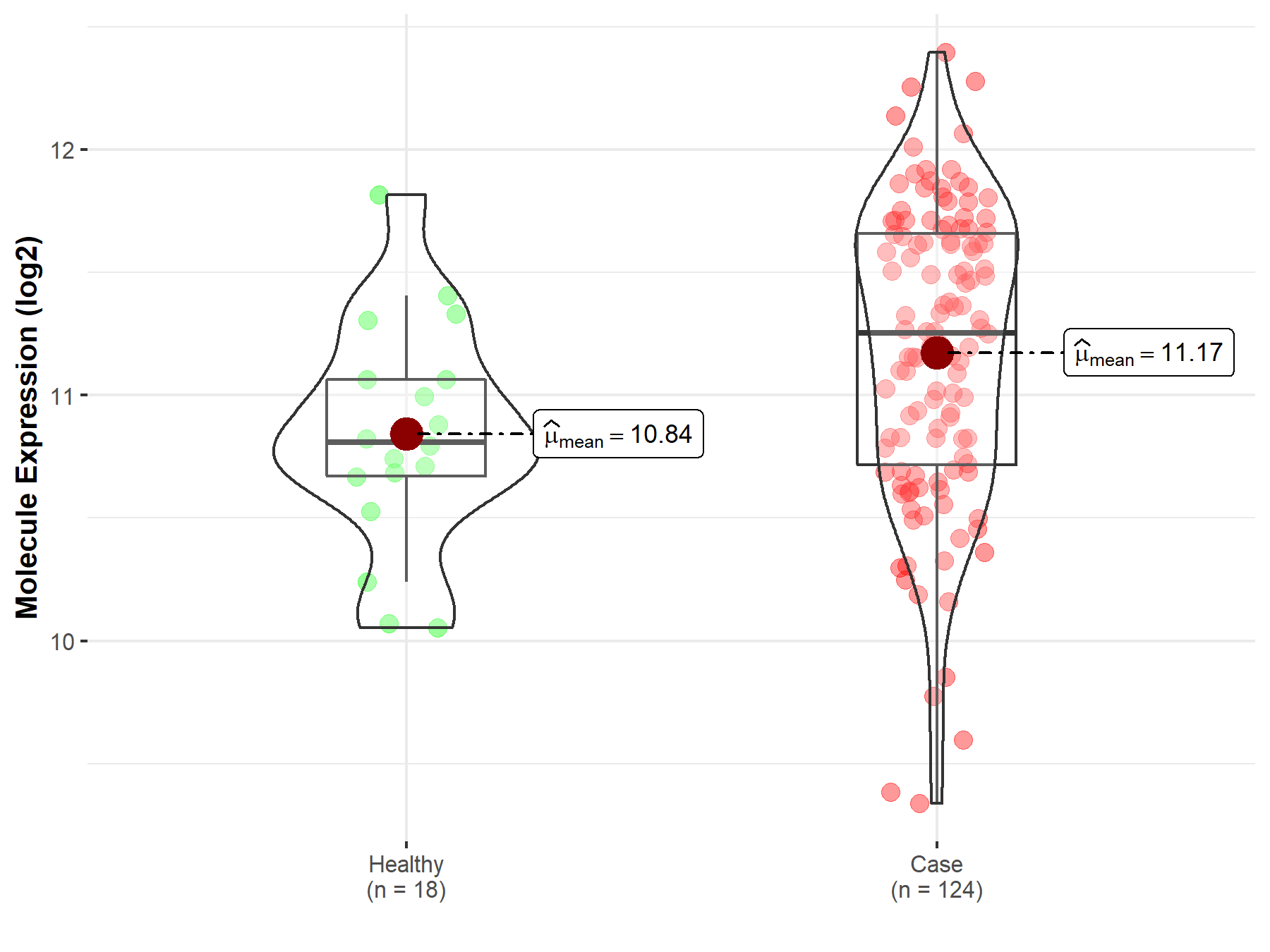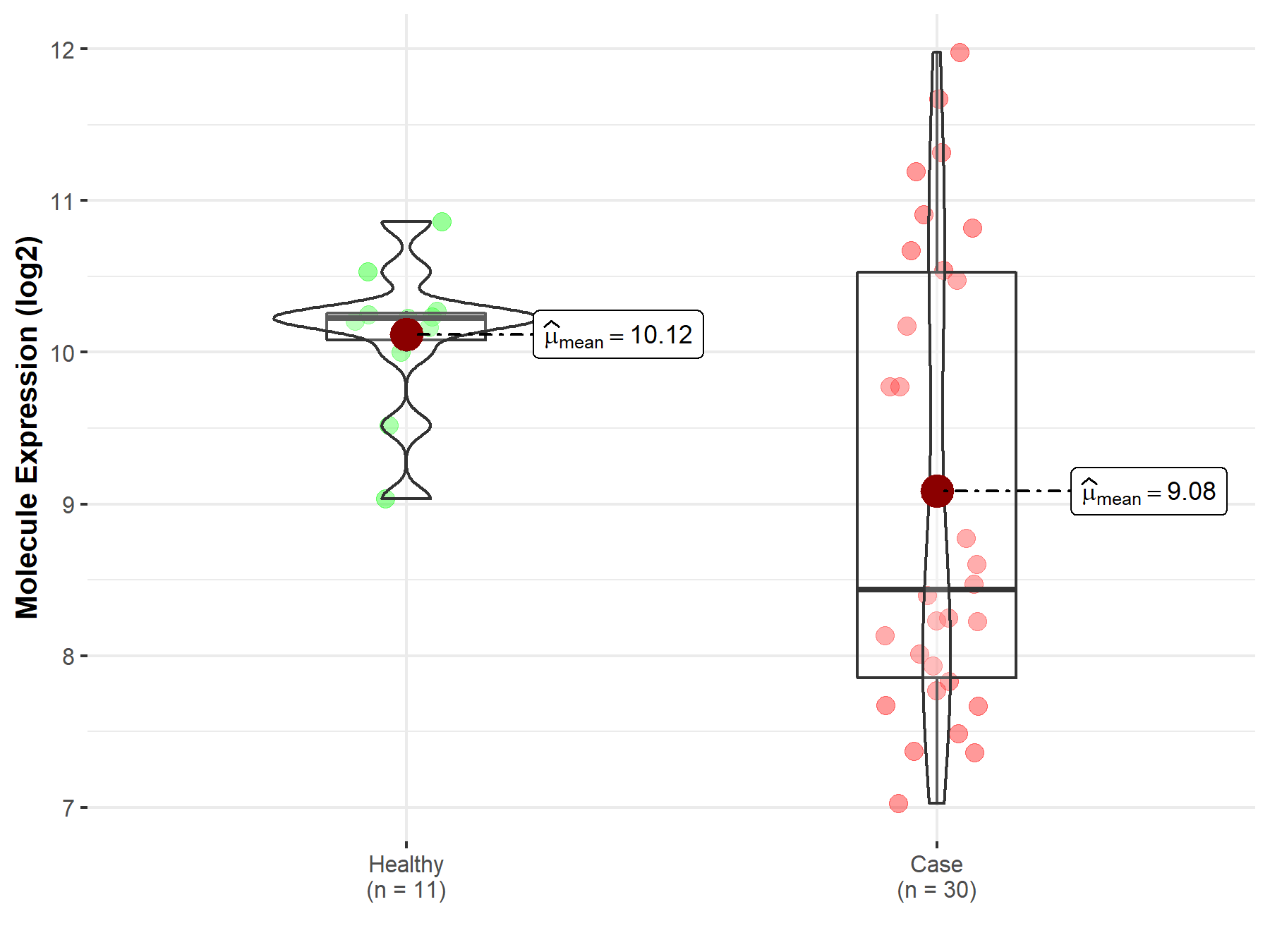Molecule Information
General Information of the Molecule (ID: Mol00044)
| Name |
Cyclin-dependent kinase inhibitor 1A (CDKN1A)
,Homo sapiens
|
||||
|---|---|---|---|---|---|
| Synonyms |
CDK-interacting protein 1; Melanoma differentiation-associated protein 6; MDA-6; p21; CAP20; CDKN1; CIP1; MDA6; PIC1; SDI1; WAF1
Click to Show/Hide
|
||||
| Molecule Type |
Protein
|
||||
| Gene Name |
CDKN1A
|
||||
| Gene ID | |||||
| Location |
chr6:36676460-36687337[+]
|
||||
| Sequence |
MSEPAGDVRQNPCGSKACRRLFGPVDSEQLSRDCDALMAGCIQEARERWNFDFVTETPLE
GDFAWERVRGLGLPKLYLPTGPRRGRDELGGGRRPGTSPALLQGTAEEDHVDLSLSCTLV PRSGEQAEGSPGGPGDSQGRKRRQTSMTDFYHSKRRLIFSKRKP Click to Show/Hide
|
||||
| Function |
May be involved in p53/TP53 mediated inhibition of cellular proliferation in response to DNA damage. Binds to and inhibits cyclin-dependent kinase activity, preventing phosphorylation of critical cyclin-dependent kinase substrates and blocking cell cycle progression. Functions in the nuclear localization and assembly of cyclin D-CDK4 complex and promotes its kinase activity towards RB1. At higher stoichiometric ratios, inhibits the kinase activity of the cyclin D-CDK4 complex. Inhibits DNA synthesis by DNA polymerase delta by competing with POLD3 for PCNA binding. Plays an important role in controlling cell cycle progression and DNA damage-induced G2 arrest.
Click to Show/Hide
|
||||
| Uniprot ID | |||||
| Ensembl ID | |||||
| HGNC ID | |||||
| Click to Show/Hide the Complete Species Lineage | |||||
Type(s) of Resistant Mechanism of This Molecule
Drug Resistance Data Categorized by Drug
Approved Drug(s)
4 drug(s) in total
| Drug Resistance Data Categorized by Their Corresponding Mechanisms | ||||
|
|
||||
| Disease Class: Prolactin-secreting adenoma | [1] | |||
| Resistant Disease | Prolactin-secreting adenoma [ICD-11: 2F37.Y] | |||
| Resistant Drug | Bromocriptine | |||
| Molecule Alteration | Expression | Down-regulation |
||
| Experimental Note | Identified from the Human Clinical Data | |||
| Cell Pathway Regulation | Cell invasion | Activation | hsa05200 | |
| Cell migration | Activation | hsa04670 | ||
| In Vitro Model | C4-2 cells | Prostate | Homo sapiens (Human) | CVCL_4782 |
| Experiment for Molecule Alteration |
Western blotting analysis | |||
| Experiment for Drug Resistance |
CCK-8 assay | |||
| Mechanism Description | Knockdown of mir-93 increased the sensitivity of MMQ cells to bromocriptine treatment, and these effects were abolished when p21 was knocked-down using siRNA. | |||
| Drug Resistance Data Categorized by Their Corresponding Mechanisms | ||||
|
|
||||
| Disease Class: Prolactin-secreting adenoma | [1] | |||
| Resistant Disease | Prolactin-secreting adenoma [ICD-11: 2F37.Y] | |||
| Resistant Drug | Cabergoline | |||
| Molecule Alteration | Expression | Down-regulation |
||
| Experimental Note | Identified from the Human Clinical Data | |||
| Cell Pathway Regulation | Cell proliferation | Activation | hsa05200 | |
| In Vitro Model | C4-2 cells | Prostate | Homo sapiens (Human) | CVCL_4782 |
| Experiment for Molecule Alteration |
Western blotting analysis | |||
| Experiment for Drug Resistance |
CCK-8 assay | |||
| Mechanism Description | Knockdown of mir-93 increased the sensitivity of MMQ cells to bromocriptine treatment, and these effects were abolished when p21 was knocked-down using siRNA. | |||
| Drug Resistance Data Categorized by Their Corresponding Mechanisms | ||||
|
|
||||
| Disease Class: Cervical cancer | [2] | |||
| Resistant Disease | Cervical cancer [ICD-11: 2C77.0] | |||
| Resistant Drug | Cisplatin | |||
| Molecule Alteration | Expression | Up-regulation |
||
| Experimental Note | Revealed Based on the Cell Line Data | |||
| Cell Pathway Regulation | Cell proliferation | Activation | hsa05200 | |
| In Vitro Model | Hela cells | Cervix uteri | Homo sapiens (Human) | CVCL_0030 |
| HeLa/DDP cells | Uterus | Homo sapiens (Human) | CVCL_C869 | |
| Experiment for Molecule Alteration |
Western blot analysis | |||
| Experiment for Drug Resistance |
CCK8 assay; EdU assay; Flow cytometric analysis | |||
| Mechanism Description | UCA1 suppressed apoptosis by downregulating caspase 3 and upregulating CDk2, whereas enhanced cell proliferation by increased level of survivin and decreased level of p21. | |||
| Disease Class: Lung adenocarcinoma | [3] | |||
| Resistant Disease | Lung adenocarcinoma [ICD-11: 2C25.0] | |||
| Resistant Drug | Cisplatin | |||
| Molecule Alteration | Expression | Down-regulation |
||
| Experimental Note | Identified from the Human Clinical Data | |||
| Cell Pathway Regulation | Cell apoptosis | Inhibition | hsa04210 | |
| p21 | Regulation | |||
| p21 | Regulation | |||
| In Vitro Model | A549 cells | Lung | Homo sapiens (Human) | CVCL_0023 |
| Experiment for Molecule Alteration |
Western blot analysis | |||
| Experiment for Drug Resistance |
MTT assay | |||
| Mechanism Description | miR-224 could promote the in vitro and in vivo DDP resistance of LA cells via regulating G1/S cell cycle transition and apoptosis. p21WAF1/CIP1, a potent cyclin-dependent kinase inhibitor, was identified as the direct and functional target gene of miR-224. Overexpression of p21WAF1/CIP1 could phenocopy the effect of miR-224 downregulation and silencing of p21WAF1/CIP1 could partially reverse the effect of miR-224 downregulation on DDP resistance of DDP-resistant LA cells. In addition, miR-224 could affect the G1/S transition of cell cycle and apoptosis in LA cells through the p21WAF1/CIP1-pRb pathway and the intrinsic mitochondrial death pathway. Furthermore, miR-224 was found to be downregulated in DDP-responding LA tissues, and its expression was inversely correlated with p21WAF1/CIP1. Multivariate analyses indicated that the status of miR-224 might be an independent prognostic factor for predicting the survival of LA patients. | |||
| Disease Class: Lung adenocarcinoma | [4] | |||
| Resistant Disease | Lung adenocarcinoma [ICD-11: 2C25.0] | |||
| Resistant Drug | Cisplatin | |||
| Molecule Alteration | Expression | Down-regulation |
||
| Experimental Note | Identified from the Human Clinical Data | |||
| In Vitro Model | A549 cells | Lung | Homo sapiens (Human) | CVCL_0023 |
| A549/DDP cells | Lung | Homo sapiens (Human) | CVCL_0023 | |
| In Vivo Model | BALB/c nude mouse xenograft model | Mus musculus | ||
| Experiment for Molecule Alteration |
Western blotting analysis | |||
| Experiment for Drug Resistance |
MTT assay | |||
| Mechanism Description | Upregulation of HOTAIR contributes to the cisplatin resistance of LAD cells, at least in part, through the regulation of p21 expression. | |||
| Drug Sensitivity Data Categorized by Their Corresponding Mechanisms | ||||
|
|
||||
| Disease Class: Lung cancer | [5] | |||
| Sensitive Disease | Lung cancer [ICD-11: 2C25.5] | |||
| Sensitive Drug | Cisplatin | |||
| Molecule Alteration | Expression | Down-regulation |
||
| Experimental Note | Revealed Based on the Cell Line Data | |||
| Cell Pathway Regulation | Cell apoptosis | Activation | hsa04210 | |
| Cell proliferation | Inhibition | hsa05200 | ||
| NER signaling pathway | Regulation | hsa03421 | ||
| In Vitro Model | A549 cells | Lung | Homo sapiens (Human) | CVCL_0023 |
| Experiment for Molecule Alteration |
Western blot analysis | |||
| Experiment for Drug Resistance |
Alamar blue assay; EdU cell proliferation assay | |||
| Mechanism Description | miR-33-3b-3p exerted a critical role in modulating the cisplatin sensitivity of lung cancer cells, which might probably through suppressing the p21 expression. | |||
| Drug Resistance Data Categorized by Their Corresponding Mechanisms | ||||
|
|
||||
| Disease Class: Breast cancer | [6] | |||
| Resistant Disease | Breast cancer [ICD-11: 2C60.3] | |||
| Resistant Drug | Tamoxifen | |||
| Molecule Alteration | Expression | Down-regulation |
||
| Experimental Note | Revealed Based on the Cell Line Data | |||
| Cell Pathway Regulation | Cell apoptosis | Inhibition | hsa04210 | |
| Cell proliferation | Activation | hsa05200 | ||
| In Vitro Model | MCF-7 cells | Breast | Homo sapiens (Human) | CVCL_0031 |
| BT474 cells | Breast | Homo sapiens (Human) | CVCL_0179 | |
| MCF7/TAMR cells | Breast | Homo sapiens (Human) | CVCL_EG55 | |
| CAMA-1 cells | Breast | Homo sapiens (Human) | CVCL_1115 | |
| HEK293 FT cells | Kidney | Homo sapiens (Human) | CVCL_6911 | |
| Experiment for Molecule Alteration |
Western blot analysis | |||
| Experiment for Drug Resistance |
Promega assay | |||
| Mechanism Description | Tamoxifen-resistant cells express miRNA-519a at high levels, which directly represses the expression of PTEN, RB1, and CDkN1A, central nodes of a dense network, allowing the cells to proliferate, even in the presence of tamoxifen. miRNA-519a increases viability and S-phase population of the cell cycle, but does not affect EMT or invasion. miRNA-519a-expressing cells evade tamoxifen-induced apoptosis. | |||
Disease- and Tissue-specific Abundances of This Molecule
ICD Disease Classification 02

| Differential expression of molecule in resistant diseases | ||
| The Studied Tissue | Lung | |
| The Specified Disease | Lung cancer | |
| The Expression Level of Disease Section Compare with the Healthy Individual Tissue | p-value: 9.38E-16; Fold-change: -5.57E-01; Z-score: -6.54E-01 | |
| The Expression Level of Disease Section Compare with the Adjacent Tissue | p-value: 2.03E-20; Fold-change: -1.02E+00; Z-score: -1.03E+00 | |
|
Molecule expression in the normal tissue adjacent to the diseased tissue of patients
Molecule expression in the diseased tissue of patients
Molecule expression in the normal tissue of healthy individuals
|
||
| Disease-specific Molecule Abundances |

|
Click to View the Clearer Original Diagram |
| Differential expression of molecule in resistant diseases | ||
| The Studied Tissue | Breast tissue | |
| The Specified Disease | Breast cancer | |
| The Expression Level of Disease Section Compare with the Healthy Individual Tissue | p-value: 2.34E-01; Fold-change: 1.70E-01; Z-score: 2.41E-01 | |
| The Expression Level of Disease Section Compare with the Adjacent Tissue | p-value: 5.31E-04; Fold-change: -4.08E-01; Z-score: -4.98E-01 | |
|
Molecule expression in the normal tissue adjacent to the diseased tissue of patients
Molecule expression in the diseased tissue of patients
Molecule expression in the normal tissue of healthy individuals
|
||
| Disease-specific Molecule Abundances |

|
Click to View the Clearer Original Diagram |
| Differential expression of molecule in resistant diseases | ||
| The Studied Tissue | Cervix uteri | |
| The Specified Disease | Cervical cancer | |
| The Expression Level of Disease Section Compare with the Healthy Individual Tissue | p-value: 1.13E-02; Fold-change: 4.46E-01; Z-score: 9.68E-01 | |
|
Molecule expression in the diseased tissue of patients
Molecule expression in the normal tissue of healthy individuals
|
||
| Disease-specific Molecule Abundances |

|
Click to View the Clearer Original Diagram |
| Differential expression of molecule in resistant diseases | ||
| The Studied Tissue | Pituitary | |
| The Specified Disease | Pituitary cancer | |
| The Expression Level of Disease Section Compare with the Healthy Individual Tissue | p-value: 2.02E-03; Fold-change: -1.79E+00; Z-score: -3.70E+00 | |
|
Molecule expression in the diseased tissue of patients
Molecule expression in the normal tissue of healthy individuals
|
||
| Disease-specific Molecule Abundances |

|
Click to View the Clearer Original Diagram |
| The Studied Tissue | Pituitary | |
| The Specified Disease | Pituitary gonadotrope tumor | |
| The Expression Level of Disease Section Compare with the Healthy Individual Tissue | p-value: 1.09E-07; Fold-change: -2.58E+00; Z-score: -6.10E+00 | |
|
Molecule expression in the diseased tissue of patients
Molecule expression in the normal tissue of healthy individuals
|
||
| Disease-specific Molecule Abundances |

|
Click to View the Clearer Original Diagram |
Tissue-specific Molecule Abundances in Healthy Individuals


|
||
References
If you find any error in data or bug in web service, please kindly report it to Dr. Sun and Dr. Zhang.
